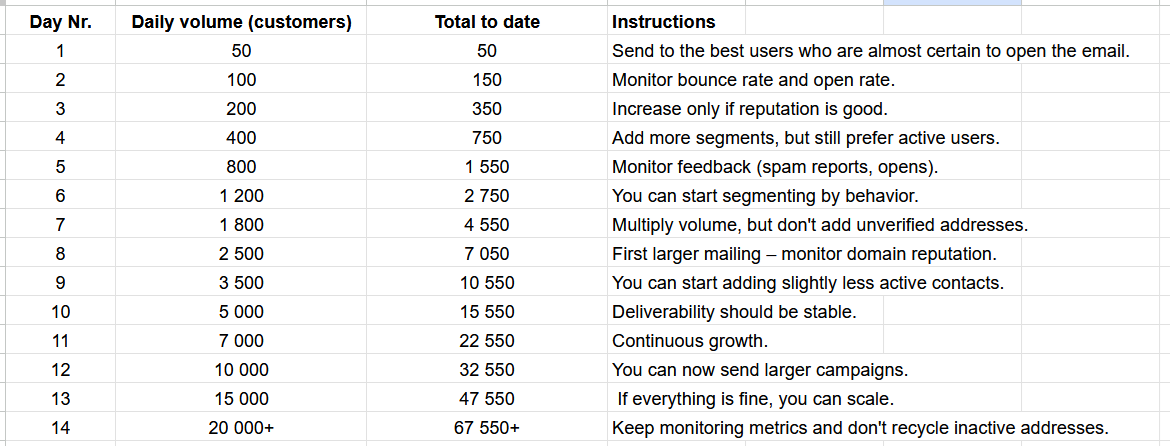Warming Up Your IP
Setting up domain authentication is just one part of optimal deliverability. When you plan to send bulk emails, you also need to build a solid Sender Reputation by slowly “warming up” your IP. This process gradually increases your trustworthiness to inbox providers like Gmail, Outlook, Seznam and others. This is especially important, if you plan to send to large number of customers at the same time.
There are more requisites to avoid ending up in spam. Click this link for a guide to SPF, DMARC, and DKIM setup. For general tips to maintain Sender Reputation, click here. Finally, to track your spam rate with Google Postmaster Tools, use this link.
The key is to send a smaller number of emails first and only to the most engaged recipients, who are likely to open them and click the links. Then, you can gradually increase the number until you reach your whole active database.
Example: Instead of sending a marketing email to your whole database of 50,000 customers, you only start sending to 50 of your most loyal customers. Then, you can gradually increase the number of recipients by 100 in the following campaigns.
A detailed proposal for sending out day by day can be found below:

It's also important to stick to a sending frequency after your domain is warmed up, i.e., on a fixed schedule (e.g., twice a week on Tuesdays and Thursdays). If you start sending emails too randomly, you risk damaging the sender's reputation. After establishing a solid sender reputation, you can add more emails and ad hoc messages.